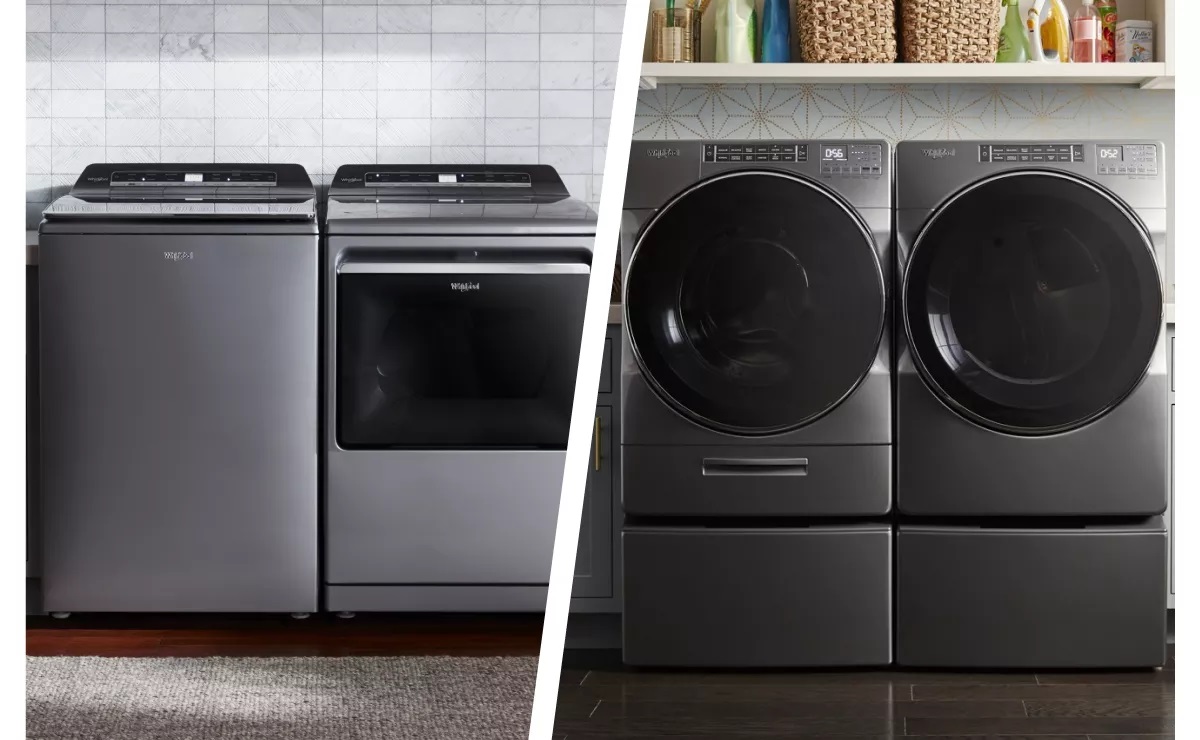The laborious chore of doing laundry has been made easier by washing machines, which have become an essential part of our life. But there are a plenty of alternatives to choose from when selecting a washing machine. We’ll examine the notable distinctions between two common varieties in this post: basic washing machines and automatic washing machines.
I. Overview
Making the correct decision when selecting a washing machine may have a big influence on your laundry routine. To help you make a wise choice, let’s examine the differences between basic and automated washing machines.
II. Basic Laundry Equipment
A. Definition and Characteristics
As the name implies, simple washing machines are entry-level models designed for easy use. They usually have few functions, concentrating on the necessities for doing laundry efficiently.
B. Benefits and Drawbacks
These devices’ price and ease of use are highlighted by their simplicity. However, individuals looking for further customisation may find their lack of sophisticated capabilities restrictive.
C. Cost-effectiveness and Usability
The cost of basic washing machines is one of its main benefits. Budget-conscious buyers who value basic functioning over sophisticated features often choose them.
III. Self-cleaning Laundries
A. Definition and Characteristics
On the other hand, sophisticated features and technology in automatic washing machines enable the whole laundry process to be automated. These devices are effective and convenient.
B. Benefits and Drawbacks
Even while automated machines are more technologically advanced and convenient, their initial cost may be greater. Often, the choice comes down to personal preferences and financial constraints.
C. Technology and Convenience
When it comes to convenience, automatic washing machines are excellent. They simplify the laundry process with programmed settings, automated dispensers, and sophisticated washing algorithms.
IV. Performance of Washing
A. Cleaning Effectiveness in Basic Devices
Even while they work well, basic washing machines may not be as efficient at cleaning as their automated counterparts. When treating very filthy objects, the basic agitation and spin cycles may not be sufficient.
B. Intelligent Cleaning Functions in Automated Devices
Advanced cleaning technology, such as several rinse cycles, stain-specific treatments, and a variety of wash modes, are used by automatic machines. This guarantees excellent cleaning results, particularly for difficult stains.
V. Energy and Water Efficiency
A. Water Usage in Basic Machinery
Water consumption is often lower in simpler washing machines. Even though they look environmentally friendly, it’s important to take into account how well they clean clothing using less water.
B. Energy-Efficient Mechanisms in Automated Equipment
Energy-efficient elements like sophisticated sensors and inverter technology are often seen in automatic machinery. These support environmental sustainability by lowering energy use.
VI. Upkeep and Sturdiness
A. Simple Machines’ Easy Maintenance
Easy maintenance is a well-known feature of basic washing machines. Repaired and maintained with fewer parts and simpler systems, they are usually easy to do.
B. Automatic Machine Durability and Technological Developments
Modern materials and engineering have made automatic machines very durable. The lifespan and performance outweigh the cost, even though repairs may be more involved.
VII. Price Comparison
A. Starting Expense
When it comes to upfront cost, simple washing machines offer a distinct benefit. They are available to a larger audience because to their affordability.
B. Extended-Term Cost Evaluation
But it’s important to think about long-term expenses. Although automatic machines may need a larger initial investment, over time they may save costs due to their longevity and efficiency.
VIII. Effect on the Environment
A. The Environmental Impact of Simple Machines
It is possible to see the sparing use of water in basic machinery as ecologically beneficial. However, the initial water savings might be countered by the need to rewash due to their possible lack of cleaning efficacy.
B. Ecological Viability Characteristics of Automatic Devices
Designing automatic equipment with sustainability in mind is becoming more and more common. They make an effort to leave as little of an environmental impact as possible, from energy-efficient components to water recycling systems.
IX. Experience of the User
A. Testimonials and Comments from Users of Simple Machines
A lot of people value how easy it is to use simple devices. But questions can surface about how well they clean and if they are appropriate for homes with particular laundry requirements.
B. Contentment of Users with Automated Devices
Positive comments are often given to automatic machines for their sophisticated features and ease of use. Customers like the time savings and the adaptable choices offered for various fabric kinds.
X. Selecting the Appropriate Washing Machine
A. Factors to Take Into Account When Choosing Simple or Automatic Devices
Consider your laundry requirements, financial limitations, and long-term goals before making a choice. Take into account elements like simplicity of maintenance, water and energy economy, and cleaning efficacy.
XI. Upcoming Developments in Washing Machine Technology
A. New Developments in Basic Washing Machines
Technological improvements affect even entry-level washing machines. Simple machine innovations might concentrate on adding user-friendly features and increasing cleaning efficiency.
B. Improvements in Automatic Washing Machine Technology
It is probable that automatic washing machines will persist in developing with advanced technology, enhanced effectiveness, and eco-friendly attributes. When thinking about making a future purchase, keep an eye on rising trends.
XII. Actual Case Studies
A. Tales of Triumph Using Basic Laundry Machines
Tell stories of people who were satisfied with basic washing machine price, highlighting their dependability and fit for certain types of lives.
B. The Advantages of Automatic Washing Machines for Contemporary Homes
Describe the experiences of families who have switched to automated washing machines, emphasising the time-saving and cutting-edge features that improve their laundry routine.
XIII. Final Thoughts
In conclusion, personal preferences, financial constraints, and particular laundry needs all play a role in the decision between a basic and an automated washing machine. Both kinds have advantages, and knowing the distinctions helps customers choose what best suits their requirements.
FAQs
A. What kind of washing machine uses less energy?
Energy-efficient solutions are available for both kinds, although automated machines often incorporate sophisticated features that increase energy efficiency.
B. Does maintaining automatic machinery cost more money?
Even while autonomous machines could need more frequent repairs, their long-term dependability and effectiveness might compensate for these expenditures.
C. Do simple devices use less water than those that are automated?
Sure, basic machines tend to use less water, but because of their cleaning effectiveness, the water savings can be offset by the need to rewash.
D. Can delicate textiles be washed by automated washing machines?
Yes, many automated washing machines are equipped with functions and wash modes tailored especially for delicate materials.
E. How do advances in technology affect the lifespan of washing machines?
Improved lifespan is a result of technological developments in both basic and automated equipment, with automatic machines exhibiting durability due to sophisticated engineering.










